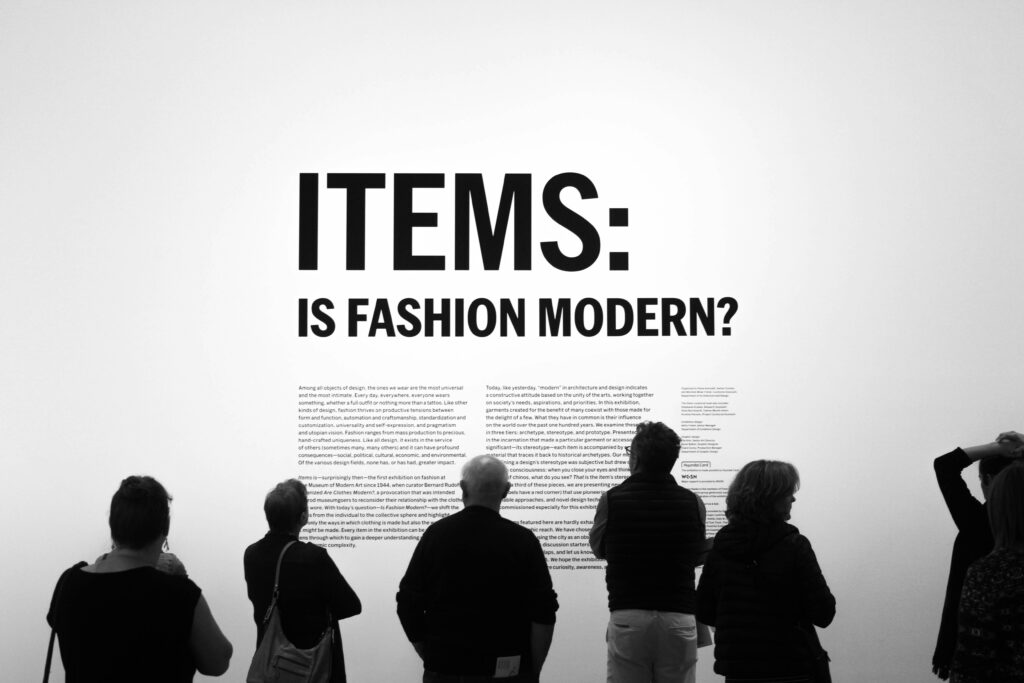What Sparked the Shift
When the world shut down, so did the runways. The pandemic didn’t just postpone fashion shows—it exposed the fragility of a system that relied too heavily on physical presence, global travel, and tight, seasonal calendars. Suddenly, the front row was empty, the backstage silent, and the industry in freefall. Travel bans, health concerns, and growing pressure for sustainable practices forced fashion houses to find a fix—fast.
Traditional catwalks weren’t built for crisis. They’re expensive, exclusive, and carbon-heavy. As the cracks widened, the appeal of digital alternatives became hard to ignore. For once, tradition flexed. Fashion powerhouses, long obsessed with legacy and touchpoints, went from couture to code almost overnight.
And the timing wasn’t accidental. Virtual reality tech, high-speed streaming, and digital production tools had all quietly matured just enough to shoulder the load. Platforms could host full shows—immersive, interactive, and global—with zero risk of cancellation due to a city lockdown or wildfire smoke.
The pivot wasn’t cosmetic. It was survival—and strangely, just what fashion needed after years of talking about innovation without acting on it. Now, the stage is rewired. And it speaks online.
Digital vs. Physical: What Changed
From Runway to Screen
The fashion show has traditionally been a sensory-rich, in-person experience—limited to industry insiders, buyers, and press. But with the rise of digital alternatives, the landscape has dramatically shifted.
Key differences between physical and digital shows:
- Venue: Physical shows require elaborate venues; digital shows unfold anywhere with a screen.
- Audience: Traditional shows are invite-only; digital shows open the doors to global audiences.
- Pacing: Runway shows follow strict schedules; digital events allow brands to drop content on demand.
- Experience: In-person shows offer atmosphere and grandiosity; digital experiences rely on immersive visuals and interactivity.
Digital Advantages Worth Noting
Switching to digital didn’t just preserve fashion weeks—it unlocked a host of strategic advantages:
1. Expanded Reach
- Audiences across continents can now watch the latest collections in real time.
- Social sharing and streaming amplify exposure far beyond a venue.
2. Lower Costs
- Savings on travel, venue rentals, and live production logistics.
- More budget freedom to invest in digital creativity and tech.
3. Accessibility & Inclusion
- Fashion fans no longer need industry invites to participate.
- Greater visibility for underrepresented designers with fewer barriers.
4. Sustainable Production
- Reduced carbon footprint from less international travel and on-site production.
- Digital samples and CGI renderings lower the need for wasteful physical runs.
What Gets Lost in the Shift
While digital shows solve many problems, some core elements of the classic fashion experience are harder to replicate:
1. Tactile Experience
- Viewers can’t touch fabrics, assess texture, or see fit in person.
2. Live Ambiance
- The sound of the audience, the energy of the room, and real-time reactions are absent.
3. Organic Press Moments
- Serendipitous media coverage and backstage drama don’t unfold the same way online.
The magic of the runway hasn’t disappeared—it’s transformed. The challenge for brands is finding a balance that blends the impact of live events with the reach and innovation of digital platforms.
Big Players Leading the Charge
The transformation of fashion from physical runways to digital showcases didn’t happen overnight. Industry giants were among the first to experiment, invest, and ultimately define what digital fashion could be.
Fashion Houses at the Forefront
Some of the most influential luxury labels took the lead:
- Balenciaga turned heads with its video game-inspired Fall 2021 collection, introducing a virtual world where viewers could experience looks in an interactive, storyline-based environment.
- Gucci launched immersive digital experiences, including experimental online presentations and collaborations with gaming platforms.
- Louis Vuitton took digital storytelling to new heights, streaming shows with cinematic-quality production that blurred the line between fashion film and runway.
These forward-thinking moves weren’t just temporary solutions—they signaled a deep investment in the future of fashion communication.
Redefining the Runway Through Technology
Platforms became more than just distribution channels—they became creative landscapes. Fashion brands used cutting-edge tools to reimagine the viewing experience:
- AR Runways: Augmented reality allowed users to view models walking through their real-world environment via smartphone.
- Gamified Showrooms: Interactive spaces where viewers could explore looks, unlock hidden content, and even style virtual avatars.
- 3D Avatars: Designers created life-like digital models, expanding representation and offering full control over visual presentation.
The Hidden Heroes Behind the Scenes
These high-tech presentations require an entirely new type of production team—a blend of creative and technical roles:
- Stylists and traditional fashion directors still play key roles, curating collections with storytelling in mind.
- CGI Artists and 3D Modelers build everything from clothes to avatars.
- UX Designers, developers, and motion graphic experts ensure digital platforms are visually rich and user-friendly.
Together, these teams create experiences that are as much tech demonstration as fashion event. By combining couture with code, they’re rewriting the rules of runway presentation.
The Role of Social Media & Streaming
Social media has become the front row seat of the modern fashion show. Digital platforms don’t just host shows—they help shape them. From livestreams to vertical video edits, fashion presentations are now designed for multi-platform impact and interactivity.
Livestreams and Platform-Specific Drops
Fashion brands are leveraging digital channels in new ways:
- Livestreamed Runway Shows: Major labels broadcast real-time shows across YouTube, Instagram, and their own websites, often enhanced with AR filters or live commentary.
- Exclusive YouTube Premieres: Short films, behind-the-scenes footage, and full collection showcases debut on YouTube to build buzz.
- TikTok Campaigns: Snappy, stylized behind-the-scenes edits, pre-show previews, and influencer collabs bring fashion directly into the scroll habits of Gen Z viewers.
Engagement That Rivals Traditional Fashion Weeks
Unlike traditional fashion week events—restricted by geography and capped audiences—digital fashion shows thrive on:
- High-volume engagement: View counts in the millions within hours
- Real-time feedback: Comments, duets, stitches, and reactions offer live insights
- Cross-platform amplification: One show can live on in trending clips, creator reviews, and audience edits across days or weeks
These metrics aren’t just impressive—they’re reshaping how brands measure success.
Influencers as Broadcast Amplifiers
A new generation of digital-native fashion influencers adds rocket fuel to each show:
- TikTok style commentators break down looks and post-day edits—as they happen
- YouTube creators provide deep-dive reactions and analysis pieces that extend the show’s shelf life
- Instagram tastemakers reshape entire collections into shareable stories, reels, and polls
They aren’t just reporting—many are active participants in how digital shows are received and remembered.
Get more updates in our Weekly Fashion Industry Roundup
Democratizing Fashion Access
For decades, fashion shows were a velvet-rope affair—closed circles of buyers, editors, and celebrities. Digital changed that overnight. Now, a teenager in Jakarta or a stylist in Lagos can stream the same runway that once played only for insiders in Milan or Paris.
These virtual showcases aren’t toned-down versions, either. They’re bold, cinematic, and designed for screens. No invites. No gatekeeping. Just hit play. That shift has opened the door for viewers—and for the designers themselves. Independent labels that would’ve been priced out of physical Fashion Weeks are now producing full-scale digital shows, complete with AR lookbooks and interactive styling tools.
You don’t need a fashion degree or an industry connection to see what’s next in couture. You just need a screen and a signal. The exclusivity wall is down—and it’s not coming back up.
Challenges Still on the Table
For all the hype and innovation, digital fashion shows still have cracks in the screen. First, there’s the experience itself—watching a model glide across a 3D-rendered runway isn’t the same as sitting in the front row, feeling the bass from the soundtrack hitting your chest, or catching the whisper of fabrics as they move. Texture, weight, and physicality? Still not something a screen can deliver.
Then there’s the fatigue factor. With fashion houses pumping out content nonstop to stay algorithm-relevant, even core fans are feeling tapped. The magic dims when you’re hit with yet another “exclusive drop” every few days. Overproduction kills curiosity fast.
And let’s not forget access. Not everyone’s got fiber internet or a high-spec phone. In places with lower bandwidth and older devices, immersive presentations simply don’t work. Tech might be global, but infrastructure isn’t equally distributed. That reality limits who can fully engage—and who gets left out of this new era.
The tools are there, but they’re not perfect. Fashion’s digital future can’t ignore these very real gaps if the goal is inclusivity, not just spectacle.
What’s Next for Digital Runways
Fashion’s next frontier is far from flat screens and runway livestreams—it’s mixed reality, AI aesthetics, and digital ownership. Mixed reality (MR) shows are cropping up across global fashion capitals, blending physical, in-person experiences with layered digital components like realtime holograms, AR-enhanced backdrops, and virtual front rows. This isn’t about watching from your laptop anymore; it’s about stepping into hybrid spaces where the runway feels almost alive.
AI-styled models are also hitting the scene. These aren’t generic avatars—they’re algorithmically refined, styled personalities created to reflect niche aesthetics, curated identities, or even customer segments. Paired with interactive lookbooks, viewers can spin, zoom, and tap into pieces mid-show. It’s not just a look. It’s a clickable experience.
Then there’s the rise of fashion NFTs. These aren’t just collectibles—they unlock access. From ticketing exclusive shows to verifying ownership of limited-edition drops, NFTs are becoming the key to a more immersive, secure, and personal relationship with fashion brands. For digital-native consumers, it’s ownership with benefits, not just bragging rights.
The runway isn’t disappearing. It’s just waking up, wired and more layered than ever.
Final Take
Digital hasn’t killed the fashion show. It’s flipped it inside out, rebuilt it, and given it a global audience. What once lived behind velvet ropes and invite-only lists now streams across screens, anywhere and everywhere. Luxury isn’t about exclusion anymore—it’s about connection.
The brands steering this shift aren’t the loudest, just the quickest to adapt. They’re open to experimenting with tech, waking up to a new era where a show might feature avatars instead of models, run in a virtual marketplace, or invite real people—fans, not just fashion editors—to participate. These aren’t stunts. They’re new formats taking shape.
As we move deeper into 2024 and beyond, the fashion show becomes a hybrid experience. Physical isn’t going away. It’s evolving—merging with immersive tech, interactivity, and data-driven design choices. The opportunities stretch wider than Milan or Paris—designers in Nairobi or Seoul can launch global moments without leaving their home studios.
The point is clear. Inclusivity, interactivity, and imagination are the new currency in fashion presentation. Digital shows didn’t end tradition—they expanded what was possible. The future belongs to brands bold enough to build both worlds at once.


 Style & Culture Writer
Style & Culture Writer
